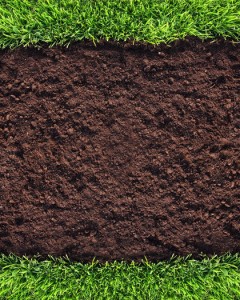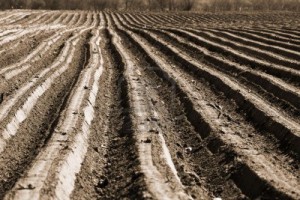Soil – core of Survival
 Soil is the absolute basis of agriculture – and, therefore, of human existence. We survive by eating plants grown in the soil, or by eating animals that eat plants grown in the soil.
Soil is the absolute basis of agriculture – and, therefore, of human existence. We survive by eating plants grown in the soil, or by eating animals that eat plants grown in the soil.
Quite clearly, the soil is our most important national resource. Wise use and management of the relatively thin upper layer, the topsoil, is crucial for us to maintain good health and a high standard of living.
But, because of misuse, a frighteningly large amount of topsoil is lost to erosion – well over 30 tonnes per hectare in some of the worst-affected areas. It can take several hundred years for a couple of centimeters of soil to form, so it’s obvious we cannot keep losing our topsoil at this rate for much longer.
To make things worse, some of our once-fertile soil, along with our groundwater and wells, is being polluted by toxic substances.
We are literally in danger of destroying the land that feeds us.
Let’s look a little at the detail of the soil. For a start, it’s not just dirt. It’s a very complex substance, a mixture of several components, formed by the weathering of rocks on the earth’s crust. A typical soil is made up of:
- About 45% minerals. Some, such as sand, clay, and iron oxides, are insoluble and are not used by plants; others, such as calcium, potassium, and magnesium, are soluble and valuable plant nutrients. Particles of minerals range in size from coarse gravel and sand to fine silt and small clay particles (colloidal).
- About 25% water. It’s needed as part of the plant cells, and to dissolve and carry nutrients. But too much water in the soil can exclude the necessary air.
- About 25% air. It provides oxygen to the roots and micro-organisms, and nitrogen to nitrogen-fixing bacteria. A good supply of air is vital for fertile soil.
- About 1-5% organic matter. This includes living soil organisms and dead organic matter that decomposes to form humus. Good soil has 2-5% organic matter, and up to 10% is beneficial.
Colloidal particles (less than 0.002mm in size) occur in clay and humus and are important to soil because of their great ability to hold some plant nutrients. And humus colloids can hold three times the nutrients clay can.
Good soil should have a loose, almost spongy, texture created by tiny sand, silt, and clay particles clustering into small “crumbs”. The soil structure, or tilth, affects the ease of water penetration and aeration, root growth, activity of soil organisms, and availability of nutrients.
Good tilth is usually found only in the upper layers of soil; the lower, harder layer is often referred to as “hardpan” or “claypan”. Soil with good tilth is easy to plough, soaks up water like a sponge, and resists erosion.
Freezing and thawing, wetting and drying, penetration by plant roots, animal burrows, and colloids all contribute to good soil. But the most important factor of all is a “glue” secreted by roots and soil micro-organisms – which is one of the many reasons soil organisms are so important.
Too much tillage can destroy good tilth in poor soils. So can removal of the vegetation cover, and excessively acidic or alkaline conditions.

pH is a soil condition you hear about a lot from “experts” – excessively so, in fact. It’s a measure of the acidity or alkalinity of any substance using a scale of numbers from 0 (most acid) to 14 (most alkaline) with 7 neutral. Most soil pH varies from 4 to 10, but most crops do best in slightly acid soils (6-6.8). Soil pH affects the availability of nutrients, which may be connected with nutrient deficiencies and toxicities; it also determines the types of soil organisms and their ability to flourish – most bacteria, for example, cannot live in very acid conditions, whereas many fungi can.
The traditional belief is that acidity is bad and should be countered by the application of lime. But some acidity is necessary for plants to absorb certain nutrients from soil colloids.
Experts usually base their liming recommendations on one pH test, but testing several times a year reveals pH can change significantly during a growing season. What’s more, fertilizers and soil conditioners have short-term and long-term effects on pH.
So, as long as the pH does not reach extremes, either way, testing and “correction” are less important than many people think. The use of lime to “sweeten” soil is a case of doing the right thing for the wrong reason. In fact, crops benefit more from the calcium they get from the lime than they do from pH control.

